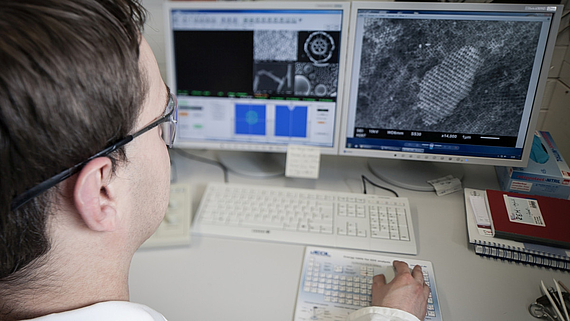
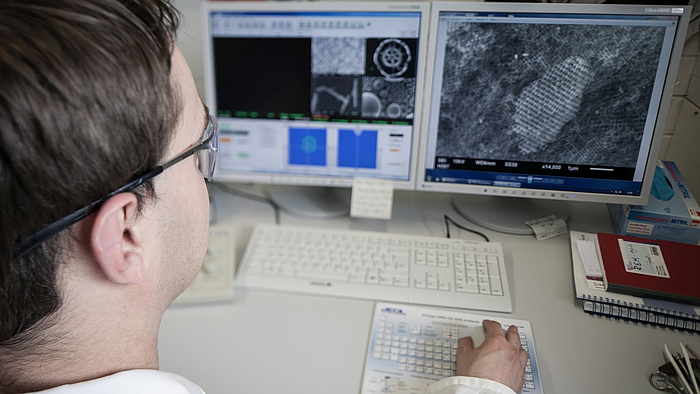
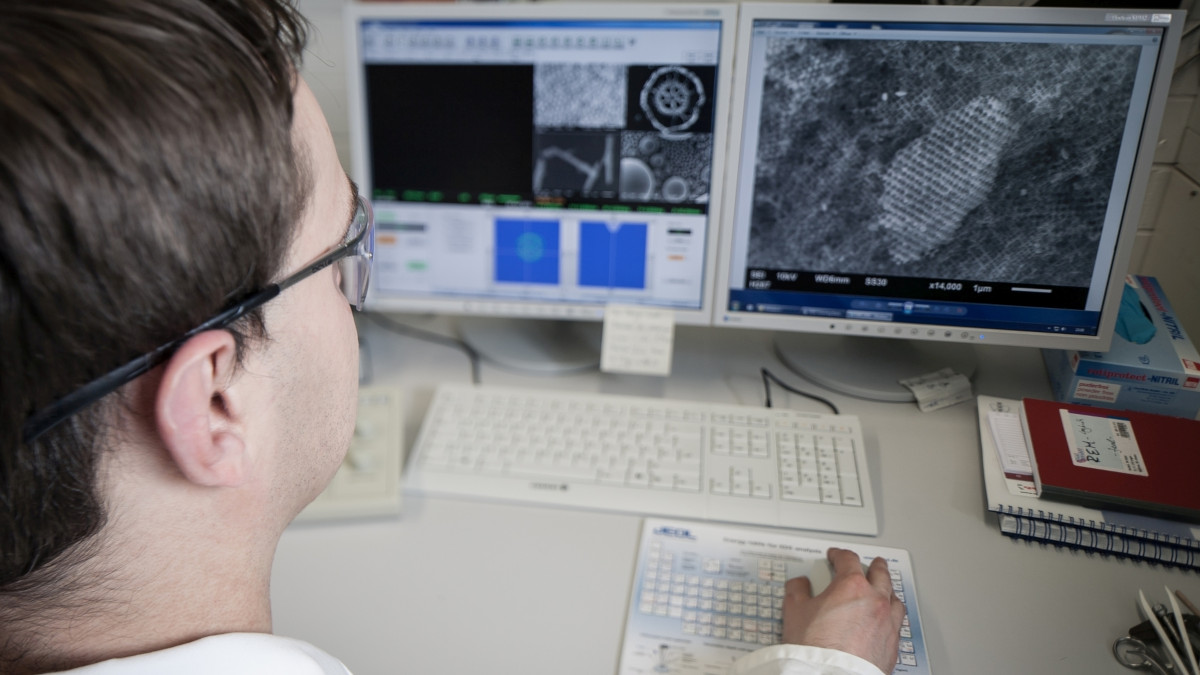
The research group deals with the controlled synthesis of metal-organic frameworks (MOFs) under mild, mostly solvothermal conditions. Computational chemistry is also used to model these inorganic-organic hybrid materials. The functionalization of solid surfaces is also of interest. Research is being conducted on this, for example to develop drug-releasing coatings for implants.
Biomaterials and implants
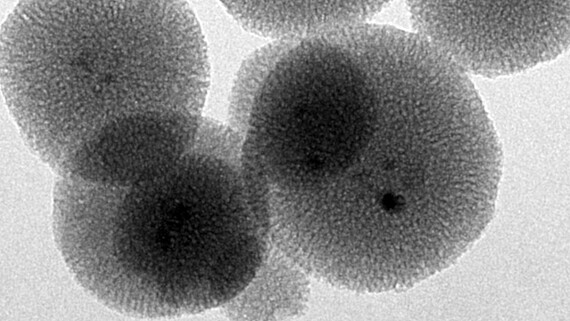
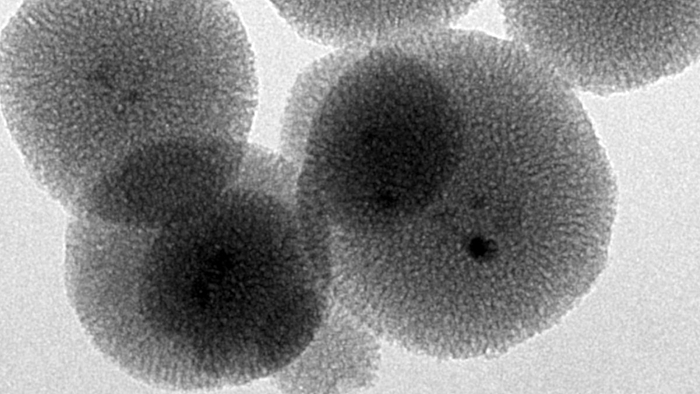
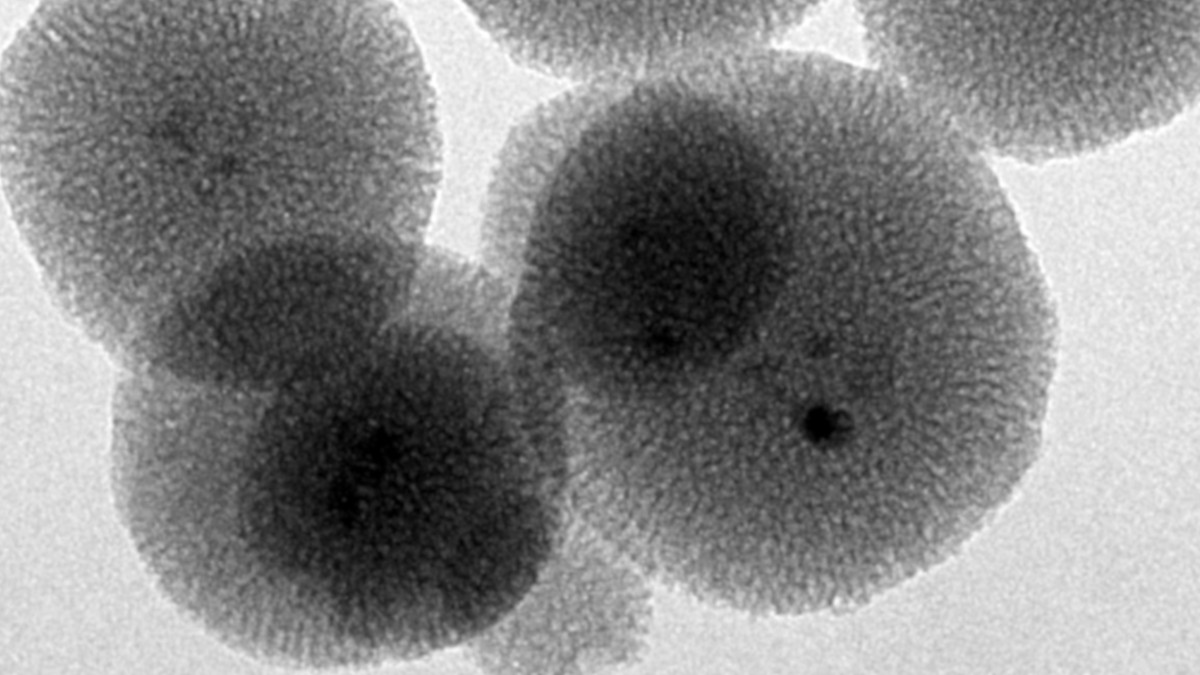
In the field of biomaterials and implants, a number of projects are currently in progress in which nanoporous materials often play an important role as a reservoir for drug delivery systems. Nanoporous drug reservoirs made of inorganic materials offer the advantage that a large permanent volume (approx. 50% of the total volume) is available for storing the active ingredient. We generally install the release system on an implant, so that the drugs are released directly at the desired site of action (implant-associated drug delivery) and problems of targeting are avoided. Much of our work uses nanoporous silica, but nanoporous metals also play an important role, as do organic-inorganic hybrid materials such as PMOs (periodic mesoporous organosilicas) or MOFs (metal-organic frameworks).
Projects and research initiatives
-
Biofabrication for NIFE
In the research initiative Biofabrication for NIFE we are working on the development of release systems that release active ingredients in response to a lowering of the pH value, e.g. antibiotics as a result of acidification of the surrounding environment by a bacterial infection.This initiative is funded by the State of Lower Saxony and the Volkswagen Foundation.
-
Antibacterial surface coatings
Within the joint research of ZIM, we have developed active ingredient depots for antibacterial drugs and anti-inflammatory biomolecules in the form of a nanoporous surface coating together with university, non-university and industrial partners.
-
Drug targeting
The biomedical uses of nanoparticles often fail due to targeting, meaning the particles do not find their way to the target tissue in order to act there. In the DFG-funded project Implant-directed Magnetic Drug Targeting we guide magnetically equipped nanoporous silica nanoparticles to the target tissue via a magnetic field generated by the magnetizable implant.
-
Regeneration
Hearing4all
Beyond the release of simple drugs, the research group is working on the release of more complex bioactive molecules for the purpose of regeneration and healing. The focus is on influencing cellular behaviour and the controlled formation of new tissue. For example, in the Hearing4all excellence cluster we are working on the one hand to correctly adjust the biology of the inner ear and to protect nerve cells of the inner ear in order to ensure their survival and good responsiveness through cochlear implants; in this context we have developed nanoporous silica nanoparticles, for example, which efficiently release the growth factor BDNF (brain-derived neurotrophic factor). Another approach is the construction of a neuronal guidance scaffold, which guides growing nerve processes to the implant. In addition, we are working on the development of active responsive materials to facilitate implantation.
Graded implants
Another project on regeneration is part of the DFG research group Graded Implants and deals with the generation of implants that promote the regeneration of bone-tendon transitions. Here we are developing nanoporous silica nanoparticles that release the growth factors BMP2 (Bone Morphogenetic Protein 2) and TGF-ß3 in a time-controlled manner. These are then selectively bound in specific regions of a fiber mat. Thus, temporal as well as spatial gradients play a role. The release and application of BMP2 has already been dealt with previously within the Rebirth Cluster of Excellence. In addition to the release of small-molecule drugs and growth factors, we are also working on the delivery of nucleic acids such as siRNA as part of the Biofabrication for NIFE research initiative.
Electronic and optical materials
Within the framework of the ZnMobil project, which is financed by the Federal Ministry of Economics and Energy in its funding program, we are working on a mechanically and electrically rechargeable zinc-air battery for automotive applications. Our task in this joint project with partners from industry, universities and research institutes is to develop a " tank-ready" zinc suspension that can be efficiently discharged and recharged. The counterpart of this "liquid anode" is a cathode at which the reduction of oxygen takes place. We have developed a very efficient nanoporous carbon material for this purpose.
In several projects, we have worked on the development of transparent conductive coatings, including those based on zinc oxide or carbon nanotubes. These are important for electro-optical applications such as LEDs and screens based on them, as well as for solar cells. In the case of metal-organic frameworks, we are interested not only in the synthesis and preparation of this substance class, but above all in electrically responsive materials that are either electrically conductive or whose properties can be controlled via electric fields. For example, we investigate graphene-like MOFs with inherent conductivity and nanocomposites of MOFs with graphene or carbon nanotubes.
Active materials
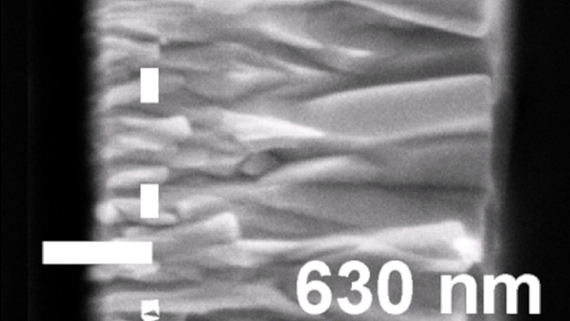
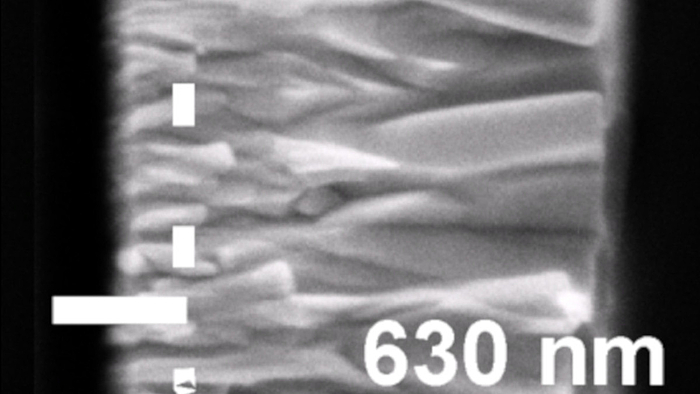
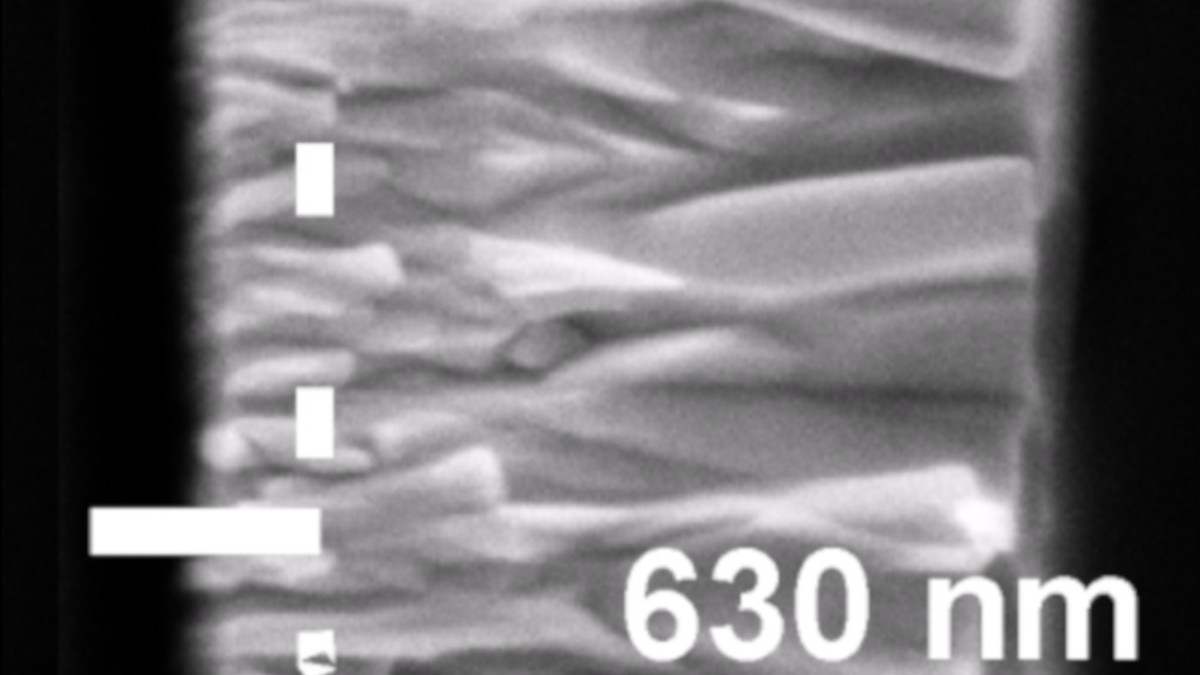
In this very relevant area we are occupied with the development of materials that change their mechanical, optical or conductivity properties in response to an external stimulus. Examples of external stimuli are optical, electrical or magnetic stimulation. Such active materials require the exact adjustment of the properties, which in principle can be realized on the basis of organic polymers. Our approach, on the other hand, focuses on organic-inorganic hybrid polymers, which offer a further possibility for adjusting the properties due to the inorganic component. Among the hybrid polymers investigated are metal-organic frameworks and ormocer-like materials. There are numerous applications for such active materials in different fields, e.g. in implantology, which change their shape during the surgical insertion process, or in the design of optically active materials, which change their refractive index in response to an applied electric field.
Simulation
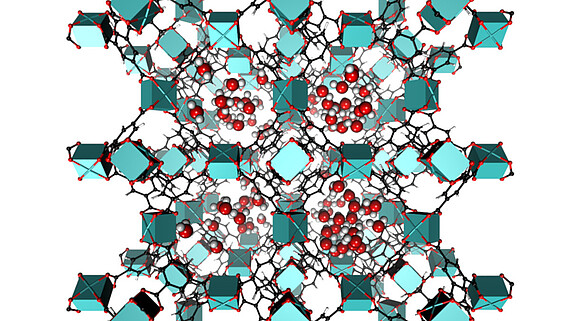

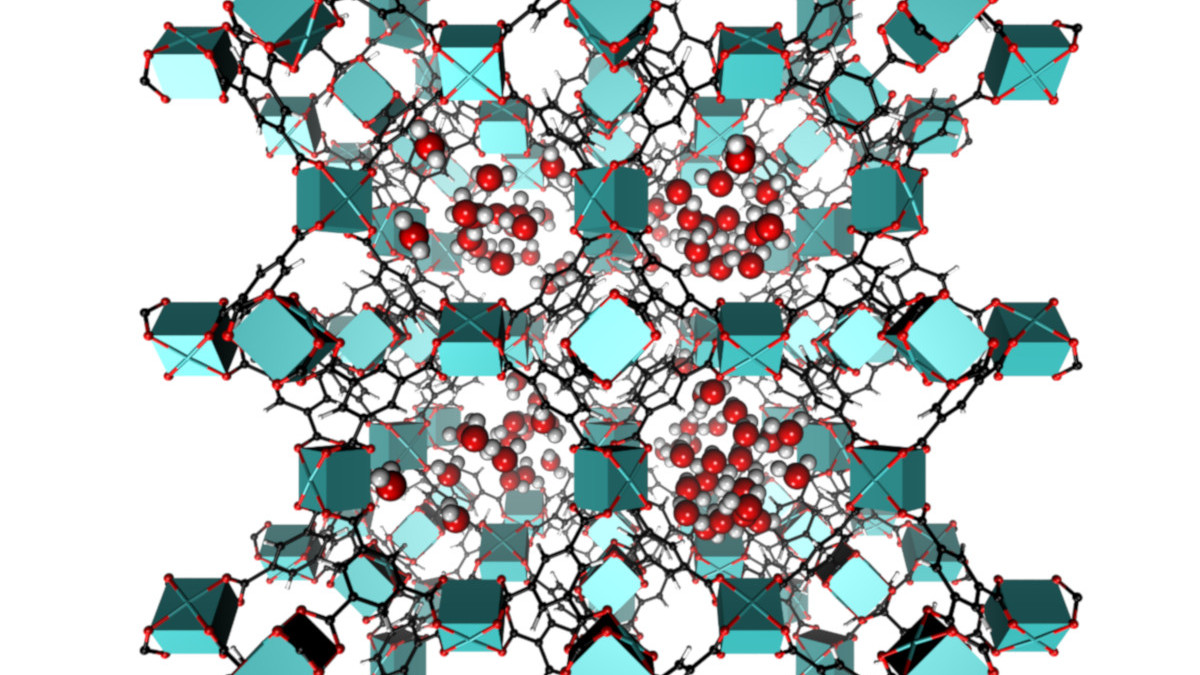
This subject area supports the other areas by simulating and modelling structures and relevant properties. Due to the complexity of the materials we investigate, only force field methods or even more abstract techniques are suitable for this purpose. In the field of metal-organic framework compounds (MOFs), we use force field modelling on the one hand to investigate general properties, such as the sorption characteristics of nanoporous frameworks. In a more specialized project, we are preparing methods that will be used to construct coordination cages with highly specific detection properties. These will be used to construct highly specific sensors.
For the first time, we have performed valid modeling studies on Ormocer®s, an interesting but structurally and chemically highly complex class of materials. This work was funded within the framework of the MARIO doctoral program ( sponsored by the State of Lower Saxony). Since it has been shown that for such materials and similarly complex nanocomposites of polymers and nanoparticles force field methods often do not lead to the desired results, we are currently working on the development of coarse-grain models.











